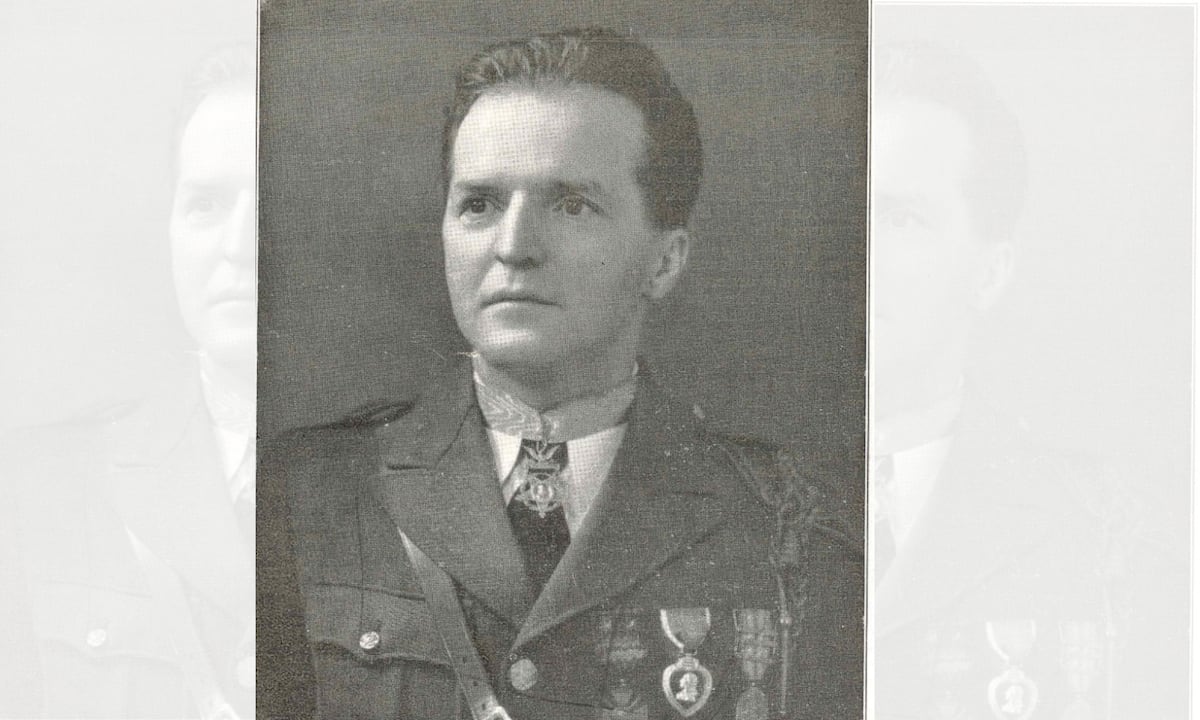One of the ironic tales to emerge retrospectively from World War I concerns a young Adolf Hitler, a regimental trench-runner in the 16th Bavarian Reserve Infantry Regiment. Allegedly, his commanding officer, Hugo Gutmann, while recommending him for the Iron Cross First Class for courage under fire, denied him a promotion on the grounds that he lacked the leadership qualities.
That story, true or not, makes for an interesting comparison to a trench runner in the American Expeditionary Forces, a private whose initiative — and leadership under fire — far exceeded expectations.
Sterling Lewis Morelock was born on June 5, 1890, in Silver Run, Maryland. His father, Addison Morelock, was a bookkeeper. His mother, Sarah, died in July 1912, after which Morelock, who was then working as a laborer, moved in with Charles and Lena Holmes in Oquawka, Illinois.
When the United States entered World War I, Morelock enlisted and after training, was assigned to Company M, 28th Infantry Regiment of the 1st Division. He and three others carried communiques throughout the company, dodging enemy snipers, machine gunners and artillery along the way.
Morelock and his colleagues were engaged in a risky enough business, but circumstances handed them a new set of cards on Oct. 4, 1918, as the AEF launched Phase Two of its offensive across the Meuse River and into the Argonne Forest. The first phase had been a murderous slog into well prepared German defenses between Sept. 26 and Oct. 1, when Gen. John J. Pershing called a halt. When the advance resumed, the exhausted 91st, 79th, 37th and 35th divisions were replaced by the 33rd, 3rd and 1st divisions.
Near the town of Exermont, the 28th Infantry made its bid for a breakthrough, only to be stopped by heavy enemy fire.
Morelock’s detachment ran messages between Company M and headquarters but in the process he seems to have spotted an opportunity.
According to his citation, Morelock voluntarily led his three comrades “as a patrol in advance of the front line through intensive intense rifle, artillery and machine gun fire and penetrated a woods which formed the German front line. Encountering a series of five hostile machine-gun nests, containing from one to five machine guns each, with his patrol he cleaned them all out, gained and held complete mastery of the situation until his company commander arrived with reinforcements, even though his entire party had become casualties. He rendered first aid to the injured and evacuated them by using stretcher bearers 10 German prisoners whom he had captured.”
While dressing his company commander’s wound, Morelock was himself hit — suffering a severe wound to the hip and forcing his evacuation.
Phase Two of the Meuse-Argonne Campaign lasted until Oct. 28. The third produced the front-wide breakthrough through the German V. Armee (V Corps) that led to the armistice.
Morelock’s four-man offensive had contributed markedly to the 1st Division’s opening breakthrough on the first day. For that, he received the Medal of Honor in 1922. Morelock paid a heavy personal price, however, as he was in and out of hospitals for 11 years before finally getting a steel hip replacement. It influenced the rest of his life, as he served as Guard for Department of Agriculture, Veterans Administration until 1957. He was also active with American veterans from 1933 to retirement in 1962.
Morelock died on Sept. 1, 1964, leaving behind a widow and two adopted daughters. He is buried at Arlington National Cemetery.
Read the full article here





